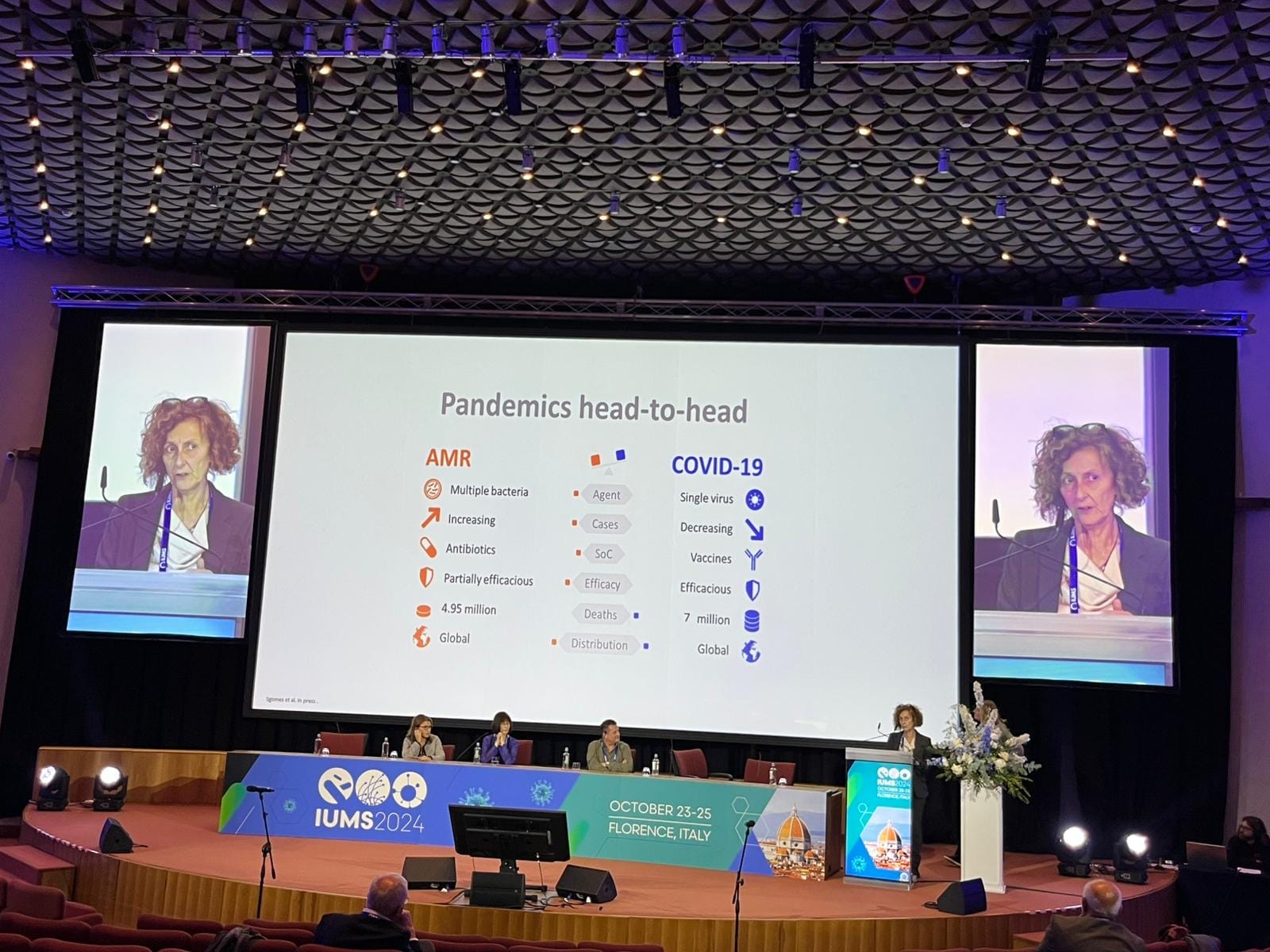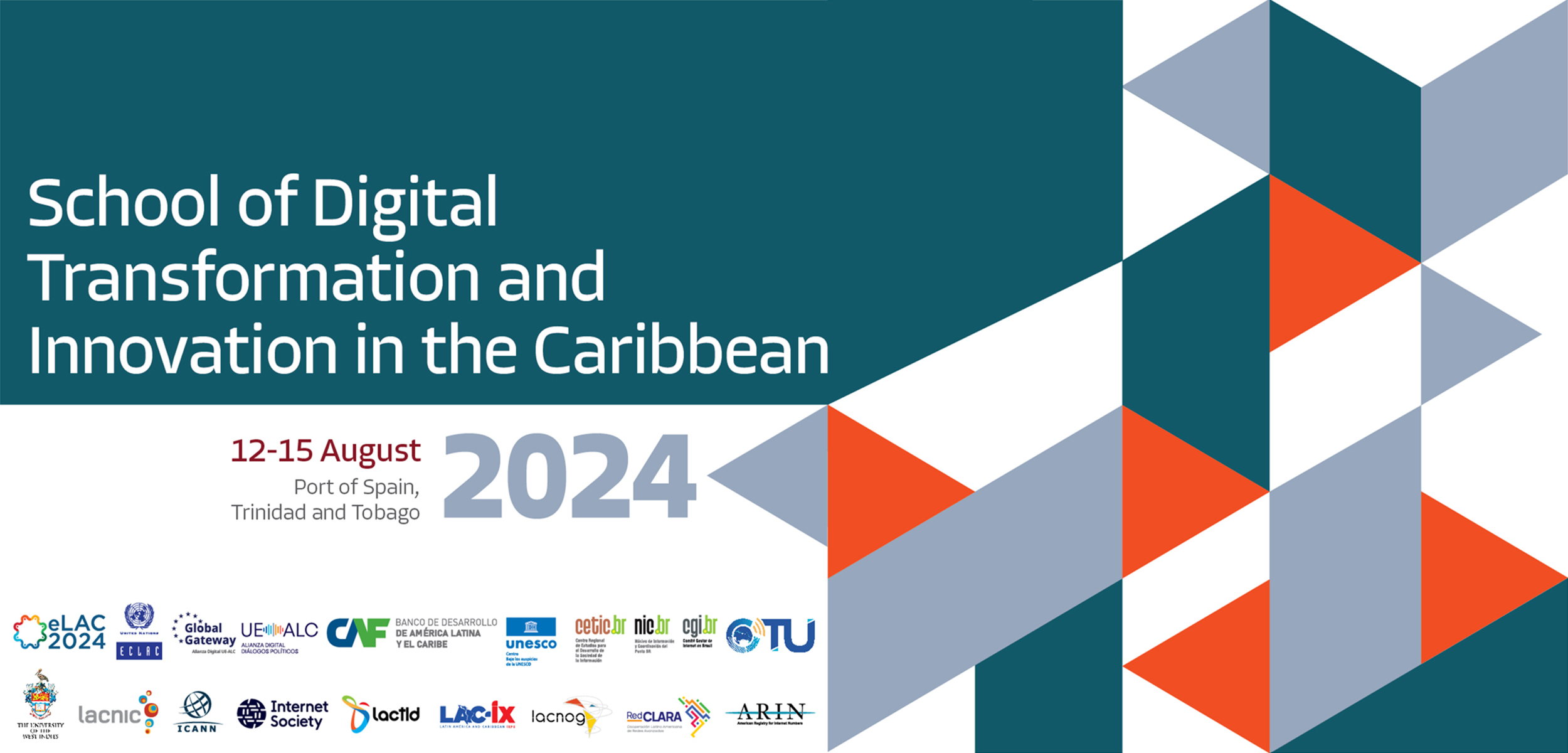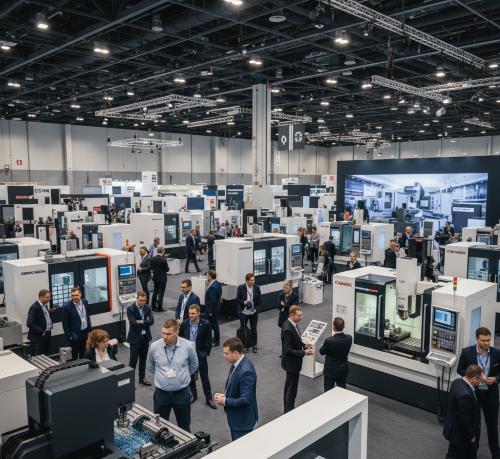
U.S. Water and Wastewater Treatment Market Size and Forecast (2025–2034)
The U.S. water and wastewater treatment market was valued at USD 64.27 billion in 2024 and is projected to grow to approximately USD 123.76 billion by 2034, with a compound annual growth rate (CAGR) of 6.80% from 2025 to 2034. This growth is driven by increasing industrialization, urbanization, technological advancements, and stringent environmental regulations, aligning with Sustainable Development Goal (SDG) 6: Clean Water and Sanitation.
Key Market Takeaways with Emphasis on SDGs
- Membrane separation equipment held the largest market share of 34.77% in 2024, supporting SDG 9: Industry, Innovation, and Infrastructure through advanced filtration technologies.
- The biological equipment segment is expected to grow at the fastest CAGR of 7.3%, promoting SDG 12: Responsible Consumption and Production by enabling eco-friendly wastewater treatment.
- Tertiary treatment processes accounted for the largest market share of 43.73% in 2024, enhancing water reuse and contributing to SDG 6.
- The secondary treatment process is anticipated to grow at a CAGR of 7.2%, improving water quality and ecosystem health, supporting SDG 14: Life Below Water.
- The industrial application segment dominated with a 66.03% market share in 2024, reflecting SDG 9 and SDG 12 by promoting sustainable industrial water management.
- The municipal segment is forecasted to grow at a CAGR of 7%, advancing SDG 11: Sustainable Cities and Communities through improved urban water infrastructure.
Impact of Artificial Intelligence Integration on Sustainable Water Management
Artificial intelligence (AI) integration is revolutionizing water and wastewater treatment by enhancing sustainable water management practices, directly supporting SDG 9 and SDG 6. AI enables:
- Streamlined recycling and reuse of water resources.
- Improved efficiency in resource recovery.
- Predictive maintenance to reduce equipment downtime and extend asset life.
- Reduction in chemical usage and energy consumption through smart monitoring.
- Automation of treatment processes to optimize operational sustainability.
Market Overview and SDG Alignment
Wastewater treatment is critical for mitigating water pollution and ensuring water quality, directly contributing to SDG 6. Investments by municipalities and industries in sustainable and innovative solutions reflect commitments to environmental protection (SDG 13: Climate Action) and public health (SDG 3: Good Health and Well-being). Urbanization and industrial growth increase demand for clean water and wastewater treatment infrastructure, necessitating advanced technologies compliant with environmental standards.
Major Growth Drivers in Relation to SDGs
- Population Growth and Urbanization: Rising populations increase water demand and wastewater generation, driving infrastructure investments that support SDG 11 and SDG 6.
- Increased Industrialization: Expansion in manufacturing, pharmaceuticals, and energy sectors elevates water consumption and wastewater production, emphasizing the need for sustainable industrial water management aligned with SDG 9 and SDG 12.
- Environmental Regulations and Compliance: Enforcement of strict water quality standards by agencies such as the EPA promotes innovation and sustainable practices, advancing SDG 6 and SDG 13.
Market Scope
| Report Coverage | Details |
|---|---|
| Market Size by 2034 | USD 123.76 Billion |
| Market Size in 2025 | USD 68.54 Billion |
| Market Size in 2024 | USD 64.27 Billion |
| Growth Rate (2025–2034) | CAGR of 6.80% |
| Base Year | 2024 |
| Forecast Period | 2025 to 2034 |
| Segments Covered | Equipment, Process, Application, Region |
Market Dynamics with SDG Focus
Drivers
Increased Industrial Activities
Growth in industries such as pharmaceuticals, food and beverages, chemicals, textiles, and energy intensifies the demand for clean process water and wastewater treatment. Advanced treatment solutions address complex pollutants, supporting SDG 12 by reducing environmental impact and promoting sustainable industrial practices.
Energy Industry’s Demand for Wastewater Treatment
The energy sector, especially thermal power generation, requires substantial water for cooling and cleaning. Integration of wastewater treatment with energy production, such as biogas generation, aligns with SDG 7: Affordable and Clean Energy and SDG 13 by promoting sustainable energy and resource efficiency.
Restraints
High Capital Costs
Significant investment requirements for infrastructure, energy, chemicals, and skilled labor pose challenges. Addressing these costs is essential to achieve SDG 9 by fostering innovation and infrastructure development.
Opportunities
Increasing Research & Development Activities
Government and private sector funding supports the development of advanced, efficient, and sustainable treatment technologies, including membrane bioreactors and AI-based monitoring systems. These initiatives advance SDG 9 and SDG 17: Partnerships for the Goals by encouraging innovation and collaboration.
Equipment Segment Analysis
| Equipment | 2022 (USD Billion) | 2023 (USD Billion) | 2024 (USD Billion) |
|---|---|---|---|
| Membrane Separation | 19.6 | 20.9 | 22.3 |
| Biological | 16.4 | 17.5 | 18.8 |
| Disinfection | 6.9 | 7.3 | 7.8 |
| Sludge Treatment | 10.6 | 11.3 | 12.0 |
| Others | 3.1 | 3.2 | 3.4 |
Membrane Separation Segment Dominance
Membrane separation technologies, including reverse osmosis, ultrafiltration, and nanofiltration, dominate due to high filtration efficiency and compact operation. These technologies support SDG 6 by enabling effective contaminant removal and water reuse in industries such as pharmaceuticals and power generation.
Biological Segment Growth
Biological treatment systems convert organic pollutants using microorganisms, aligning with SDG 12 by promoting environmentally friendly waste management. Enhanced bioreactor designs improve treatment efficiency and reduce environmental impact.
Process Segment Analysis
| Process | 2022 (USD Billion) | 2023 (USD Billion) | 2024 (USD Billion) |
|---|---|---|---|
| Primary | 11.3 | 12.0 | 12.8 |
| Secondary | 20.5 | 21.9 | 23.4 |
| Tertiary | 24.8 | 26.4 | 28.1 |
Tertiary Treatment Segment Leadership
The tertiary treatment segment leads due to the rising need for wastewater reuse and stringent environmental regulations. Advanced techniques such as membrane filtration, nutrient removal, and UV disinfection enhance water quality, directly supporting SDG 6 and SDG 14 by protecting aquatic ecosystems.
Secondary Treatment Growth
Secondary treatment reduces organic pollutants and protects aquatic life, contributing to SDG 14. Emerging technologies like membrane bioreactors improve efficiency and reduce environmental footprints.
Application Segment Analysis
| Application | 2022 (USD Billion) | 2023 (USD Billion) | 2024 (USD Billion) |
|---|---|---|---|
| Municipal | 19.1 | 20.4 | 21.8 |
| Industrial | 37.4 | 39.8 | 42.4 |
Industrial Segment Dominance
The industrial sector leads due to increased wastewater generation from pharmaceuticals, chemicals, textiles, and food processing industries. Advanced treatment technologies enable compliance with environmental standards and promote water recycling, supporting SDG 12 and SDG 9.
Municipal Segment Growth
Municipal wastewater treatment investments align with SDG 6 and SDG 11 by improving access to clean water and sustainable urban infrastructure. Efforts focus on water scarcity, pollution control, and resource recovery to enhance public health and environmental quality.
Country-Level Analysis and Sustainable Development
The U.S. market is experiencing rapid growth driven by industrialization, urbanization, and aging infrastructure. Federal, state, and municipal investments aim to modernize water systems to meet environmental and safety standards, advancing SDG 6, SDG 9, and SDG 13.
- In October 2023, Stanley County, North Carolina, allocated $32 million to upgrade the West Stanley Wastewater Plant, improving wastewater services and environmental outcomes for local communities, supporting SDG 6 and SDG 11.
Recent Developments Supporting SDGs
- October 2024: Launch of the Hubgrade digital management center in New Orleans integrates water and energy activities to enhance environmental quality and sustainability, promoting SDG 6, SDG 7, and SDG 13.
- October 2024: Rehabilitation and capacity expansion of the South Bay International Wastewater Treatment Plant in San Diego aims to reduce transboundary sewage flows, advancing SDG 6 and SDG 17.
- March 2023: The Biden-Harris Administration announced over $49 billion in investments for climate-resilient water and sanitation infrastructure, emphasizing environmental justice and SDG 6, SDG 13, and SDG 10: Reduced Inequalities.
Leading Companies in the U.S. Water and Wastewater Treatment Market
- Xylem, Inc. (U.S.)
- DuPont de Nemours, Inc. (U.S.)
- 3M Company, Inc. (U.S.)
- The Dow Chemical Company (U.S.)
- Bio-Microbics, Inc. (U.S.)
- Calgon Carbon Corporation (U.S.)
- Burns & McDonnell (U.S.)
- SPEC Limited (India), Ecolab, Inc. (U.S.)
- GFL Environmental Inc. (U.S.)
Report Segments Covered
By Equipment
- Membrane separation
- Biological
- Disinfection
- Sludge treatment
- Others
By Process
- Primary
- Secondary
- Tertiary
By Application
- Municipal
- Industrial
1. Sustainable Development Goals (SDGs) Addressed or Connected to the Issues Highlighted in the Article
- SDG 6: Clean Water and Sanitation
- The article focuses extensively on water and wastewater treatment technologies, infrastructure improvements, and sustainable water management, which directly relate to ensuring availability and sustainable management of water and sanitation for all.
- SDG 9: Industry, Innovation and Infrastructure
- Emphasis on technological advancements, AI integration, and innovative treatment solutions supports the development of resilient infrastructure and promotes sustainable industrialization.
- SDG 11: Sustainable Cities and Communities
- Urbanization and municipal wastewater treatment improvements contribute to making cities inclusive, safe, resilient, and sustainable.
- SDG 12: Responsible Consumption and Production
- Efficient water reuse, recycling, and reduction of pollutants align with sustainable consumption and production patterns.
- SDG 13: Climate Action
- Integration of sustainable energy and reduction of emissions in wastewater treatment processes contribute to climate change mitigation efforts.
- SDG 3: Good Health and Well-being
- Improved water quality and sanitation reduce waterborne diseases and promote public health.
2. Specific Targets Under Those SDGs Identified Based on the Article’s Content
- SDG 6: Clean Water and Sanitation
- Target 6.3: Improve water quality by reducing pollution, minimizing release of hazardous chemicals and materials, and substantially increasing recycling and safe reuse globally.
- Target 6.4: Substantially increase water-use efficiency across all sectors and ensure sustainable withdrawals and supply of freshwater.
- Target 6.a: Expand international cooperation and capacity-building support to developing countries in water and sanitation-related activities and programs.
- SDG 9: Industry, Innovation and Infrastructure
- Target 9.4: Upgrade infrastructure and retrofit industries to make them sustainable, with increased resource-use efficiency and greater adoption of clean and environmentally sound technologies.
- SDG 11: Sustainable Cities and Communities
- Target 11.6: Reduce the adverse per capita environmental impact of cities, including by paying special attention to air quality and municipal and other waste management.
- SDG 12: Responsible Consumption and Production
- Target 12.4: Achieve environmentally sound management of chemicals and all wastes throughout their life cycle to minimize their adverse impacts on human health and the environment.
- Target 12.5: Substantially reduce waste generation through prevention, reduction, recycling, and reuse.
- SDG 13: Climate Action
- Target 13.2: Integrate climate change measures into national policies, strategies, and planning.
- SDG 3: Good Health and Well-being
- Target 3.9: Substantially reduce the number of deaths and illnesses from hazardous chemicals and air, water, and soil pollution and contamination.
3. Indicators Mentioned or Implied in the Article to Measure Progress Towards the Identified Targets
- Water and Wastewater Treatment Market Size and Growth
- Market size in USD (e.g., USD 64.27 billion in 2024, forecast to USD 123.76 billion by 2034) and CAGR (6.80%) indicate investment and expansion in water treatment infrastructure.
- Technology Adoption and Efficiency
- Adoption rates of advanced treatment technologies such as membrane separation, biological treatment, tertiary treatment processes, and AI integration.
- Growth rates of specific segments (e.g., biological segment CAGR 7.3%, municipal segment CAGR 7%) reflect progress in sustainable practices.
- Water Quality and Pollution Reduction
- Reduction in pollutants such as heavy metals, organic chemicals, pathogens, nitrogen, and phosphorus through tertiary treatment processes.
- Compliance with environmental regulations and standards enforced by agencies like the EPA.
- Access to Clean Water and Sanitation
- Investment in municipal wastewater treatment plants and infrastructure upgrades (e.g., Stanley County $32 million upgrade) as indicators of improved access and service quality.
- Energy Efficiency and Emissions Reduction
- Integration of AI and smart monitoring to reduce chemical use and energy costs in treatment processes.
- Projects aimed at reducing emissions and improving environmental quality (e.g., Veolia’s Hubgrade center).
4. Table: SDGs, Targets and Indicators
| SDGs | Targets | Indicators |
|---|---|---|
| SDG 6: Clean Water and Sanitation |
|
|
| SDG 9: Industry, Innovation and Infrastructure |
|
|
| SDG 11: Sustainable Cities and Communities |
|
|
| SDG 12: Responsible Consumption and Production |
|
|
| SDG 13: Climate Action |
|
|
| SDG 3: Good Health and Well-being |
|
|
Source: precedenceresearch.com







